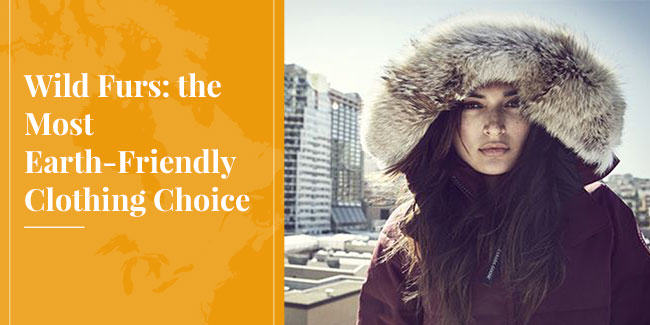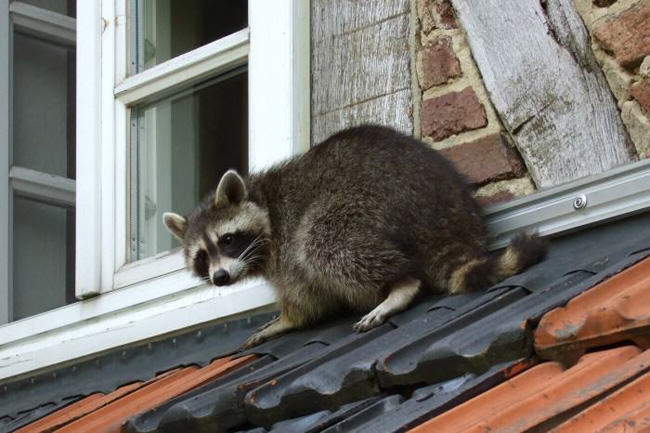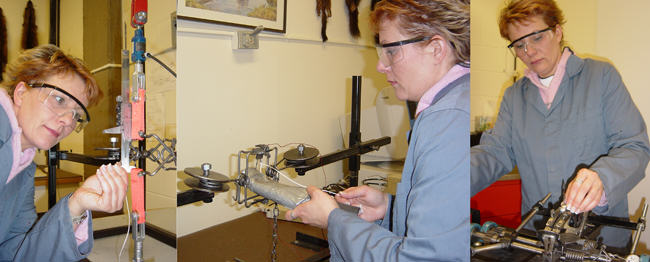
At a time when we, as consumers, are being urged to “care for our planet” and make environmentally-responsible choices, we should take a closer look at wild furs. And the closer we look, the more impressive are the environmental benefits we see. While all the furs we use today are eco-logical, wild furs are to clothing what “organic”, “free-range”, and “100-mile-diet” are to dinner.
Here are 5 top reasons why wild furs are an excellent choice for anyone who wants to adopt a “greener” life-style:
1. Like all fur, wild-sourced pelts provide a naturally warm, lightweight, durable, and ultimately biodegradable clothing material. After all, fur evolved over millions of years to become one of the most effective insulators we know. And, of course, fur is also remarkably soft, comfortable and beautiful!
2. The wild furs we use today come from abundant populations, never from endangered species. Trapping is strictly controlled by state and provincial governments to ensure that we take only part of the surplus produced by nature. Most species produce more young each year than their habitat can support to maturity. We can use part of that “surplus” without depleting the population. In financial terms, it’s like living on the “interest” that nature provides, without depleting our “capital”. This is known to environmentalists as “the sustainable use of renewable natural resources”, a key conservation principle promoted by the International Union for Conservation of Nature (IUCN) and other conservation authorities.

3. The populations of many furbearing species would have to be controlled even if we did not use the fur. Overpopulated beavers flood roads, fields, and forest habitat. Raccoon, coyote and fox populations must be controlled to protect sea turtle eggs, ground-nesting birds and other vulnerable or endangered species. Rapidly expanding coyote populations are also the number-one predator threat for sheep and cattle ranchers. Raccoons, foxes and skunks can carry rabies and other dangerous diseases into urban areas. When animals must be culled to protect property, to prevent the spread of disease, or for any other reason, it is more respectful to use them. Furthermore, without a market for fur, these management efforts would have to be financed by tax-payers.
SEE ALSO: WILDLIFE CONTROL EXPERT OR TRAPPER? WHO YOU GONNA CALL?
4. More than 35 years of scientific research and trap testing ensure that the most humane possible methods are used to capture furbearing animals. In fact, government-regulated trapping now often helps to reduce suffering, by maintaining healthier and more stable populations of wildlife than would occur naturally. If humaneness is a concern, modern trapping techniques are generally preferable to disease, starvation, and the “boom-and-bust” cycles that are nature’s ways of pruning back overpopulated beavers, muskrats, and other species. While farm-raised fur animals receive excellent care, some people feel more comfortable knowing that the animals we use live freely in their natural state until the moment when they are captured. In this sense, wild fur is the ultimate “free-range” clothing material.

5. Many furbearing animals also provide food for aboriginal and other trappers and their families. Beavers and muskrats are important food sources for the Cree people of northern Canada. Raccoons, opossums, and other species are also eaten in many parts of North America. Animals that are not eaten by trappers and their families are returned to the bush where they feed mice, birds and other animals through the winter, when food is in short supply. Nothing is wasted.
Wild fur also provides important income for aboriginal and other people living in rural or remote regions where employment opportunities may be limited. Not least important: the income from wild fur depends upon maintaining natural habitat, and thus provides an incentive for maintaining wilderness areas. One of the unintended consequences of anti-fur campaigning is that, by eliminating markets (for sealskins, for example), they force aboriginal communities in northern Canada to open their territories to more oil and gas exploration, mining and other activities that can seriously disrupt wildlife and their habitat. In fact, trappers in many regions are working with government and industry to minimize the negative impacts of logging and other resource exploitation. For example, they lobby to maintain corridors and buffer zones of uncut timber around lakes and streams that wildlife depend upon, and they identify the nesting areas of eagles and other sensitive species so they can be protected. We all care about nature, but trappers are our eyes and ears on the land – the people who can sound the alarm when nature is threatened.
As this brief summary shows, wild fur is an excellent choice for anyone who cares about nature. Ironically, the “faux fur” and other synthetic textiles promoted by many “animal-rights” activists are usually made from petroleum, a non-renewable resource. But because most people – and most media – are now in big cities, the trappers’ story is rarely heard.











Hi, I came across this site by accident. I live in Australia ( in the cooler part of Victoria) and own a number of jackets with coyote fur trimmed hoods. I am hoping to replace the hood fur (damaged) with a new thick piece, not too sure if you export to Australia? I can send you image if you want. Thanks. Tony
1st time I’m reading this type of blog and Blog is very interesting as well informative. Thanks for sharing the informative blog. surely I will share this link to my friends because it is very useful as well as interesting.
I first saw this website and thought it was really stupid, but now, I am convinced. Good article.
I have furs from 80 years ago, mink, sable, in excellent condition. Is there any interest in these items?
There are many businesses on-line now that deal in vintage furs. Can we suggest you try one of them? Good luck!
Very nice Alan, you did a great job presenting this information, I just wish all off the anti-trappers could read this.
As a hunter and user of fur products, they are much better suited to keeping people warm than most synthetic products.
Add that to the fact that fossil fuels and complex chemical processes are not involved and they decompose into natural, environmentally common compounds and elements, rather than remain forever in a landfill, whats not to like about them?
The new trap styles kill the animals as close to instantly as any other method thar man employs and in some cases, even faster. (Think how long it takes for a euthenized dog or cat to die)